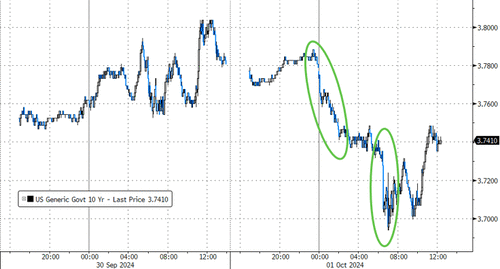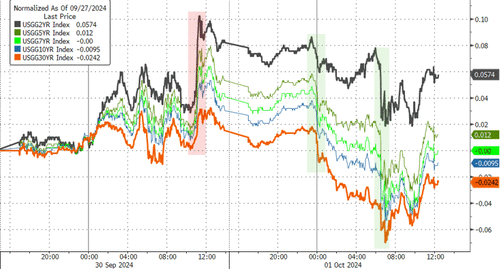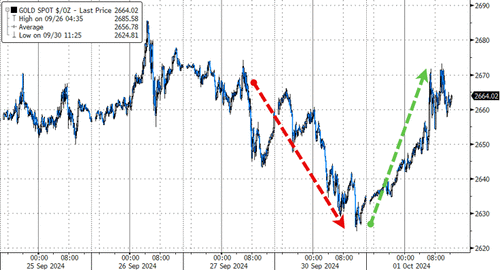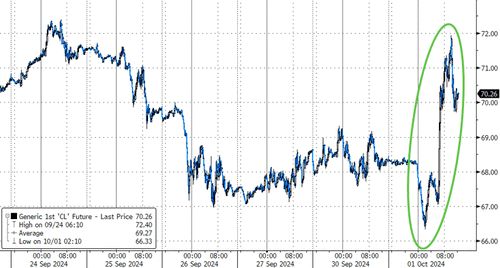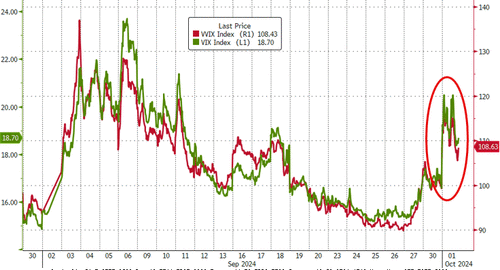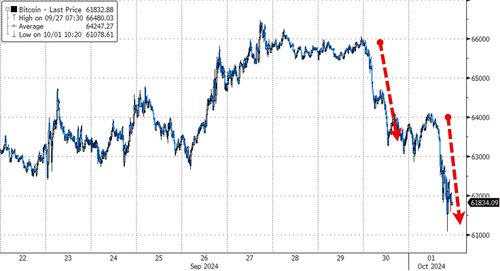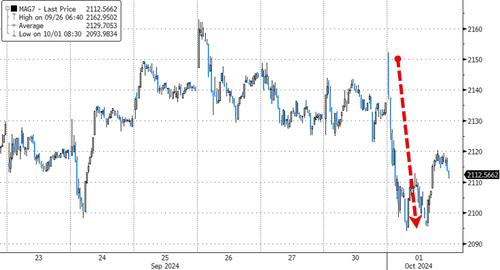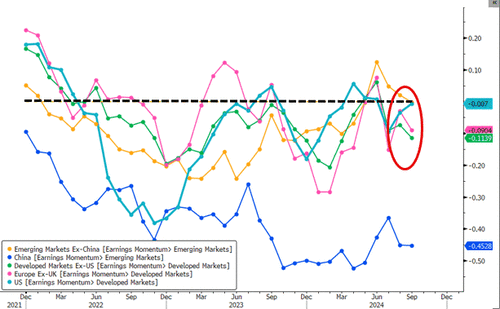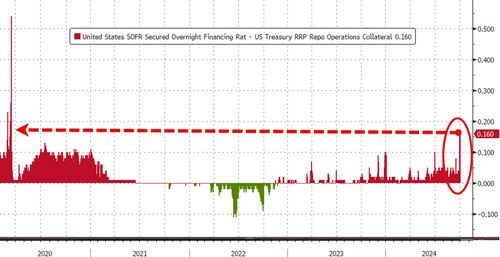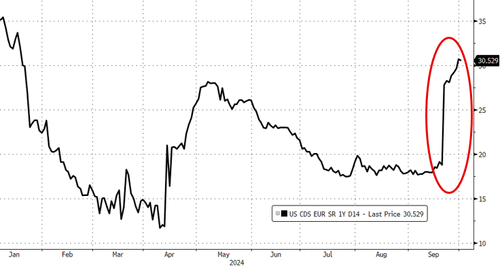Authored by James Rickards via DailyReckoning.com,
I’d like to start today’s issue by extending my thoughts and prayers to those impacted by Hurricane Helene, which has devastated significant portions of the southeast with massive flooding.
The death toll is over 100 and may increase significantly. Let’s all hope the affected areas will recover.
Moving on, with so much attention focused on the U.S. presidential election, the war in Ukraine and the war in Gaza, which is spreading to Lebanon, it’s easy to lose sight of other geopolitical developments that may be even more significant in the long run.
One of these developments is the rise of the new BRICS currency and its potential role in the global monetary system.
I’ve been warning readers about the collapse of the dollar for years and I was one of the first people to alert you to the rise of BRICS.
It’s a monetary shock about to hit the global financial system, and something I consider the most significant development in international finance in over half a century.
The annual leaders’ summit of BRICS nations is being held in Kazan, Russia from Oct. 22–24, and will include announcements moving the BRICS currency plans forward in material ways.

The Power of BRICS
The original BRICs membership from 2009 consisted of Brazil, Russia, India and China. South Africa was added in 2010 when the group’s name was changed to BRICS.
That group expanded significantly at the 2023 leaders’ summit in South Africa when Egypt, Ethiopia, Iran and the United Arab Emirates (UAE) were added. (Argentina and Saudi Arabia were also permitted to enter but Argentina withdrew its application, and Saudi Arabia deferred its membership saying it was still considering the matter.)
BRICS has been active over the years in institutionalizing its initiatives. In 2014, the BRICS created the New Development Bank (NDB), which functions along the lines of the World Bank to promote infrastructure development in emerging economies.
The NDB was capitalized with over $100 billion from its members and currently has 53 projects underway with commitments of over $15 billion to those projects.
Beyond the nine current members, there is a waiting list of over 20 aspiring members including economic powers such as Nigeria, Venezuela, Indonesia, Malaysia, Turkey, Thailand and Vietnam.
The BRICS are part of an emerging Global South that is challenging the Collective West for world economic and geopolitical dominance.
The BRICS Currency Defined
The subject of a BRICS currency is confusing to most observers and is a fraught topic even for many experts. We’ll call the potential currency a BRIC for convenience, although no formal name has been announced.
The BRICS currency is very far along in establishing itself as a viable payment currency. The prerequisites are: agreed-upon value (which can be fixed to another currency, floating or pegged to a weight of gold), secure payments channels (basically high-speed, encrypted digital pipes for authenticated message traffic), digital ledgers and an agreed issuer (the NDB based in Shanghai may be suitable for this purpose, but another institution could be created).
The single most important element is a sufficiently large membership in the BRICS currency union such that a recipient of BRICS payments can use them for purchases in many jurisdictions for many goods and services.
This last point is where most alternative currency payment arrangements fall down. Russia can sell oil to China for CNY (which they are currently doing), but they are constrained in terms of where they can spend the CNY (basically limited to Chinese manufactured goods and semiconductors).
The same issue arises when Russia sells oil to India (for rupees) or weapons to Iran (for rials). The seller is limited in terms of what they can buy with the trading partner’s currency.
This constraint goes away in a currency union with 15 or 20 members or more. If Russia earns BRICs from China, they can buy Embraer aircrafts from Brazil or semiconductors from Malaysia.
For that matter, the use of a payment currency in a multi-member currency union is not limited to members. With access to the payment channels, non-members can nevertheless agree to receive the BRICS currency in payment, confident in their ability to spend it among the other BRICS members who are trading partners.
The proof of this is the eurozone, which is currently a 20-member currency union with a single central bank and worldwide acceptance of the euro.
New Developments to Watch
There are several interesting developments taking place. The first is that the U.S. is squandering its rule-of-law advantage with sanctions on Russia, the freezing of the assets of the Central Bank of Russia and efforts to actually steal those assets and convert them into a $50 billion loan to Ukraine using structured finance.
Given this rogue behavior by the U.S., countries are becoming more cautious about large U.S. Treasury note reserves. This may account in part for the recent rally in the price of gold.
The second is that the BRICS summit in Kazan, Russia in late October will announce significant progress in building out secure payment channels and will admit new members, which will drive the group closer to the critical mass needed to launch a currency union.
None of this happens overnight. It’s helpful to recall that the euro took almost 10 years to launch from the Maastricht Treaty in 1992 to the actual creation of the euro in 2000.
I worked closely with Alberto Giovannini in the late 1990s. He was one of the leading economists and scholars who helped create the euro. I was quite familiar with the technical hurdles to creating a new currency, especially the determination of the exchange rates at which Deutsche marks, lira, francs and other member currencies would be converted to euros.
A Linkage to Gold
It will take years to develop a BRICs-denominated bond market, although the process could be accelerated if BRICS members offered bonds directly to their own citizens as retail investors.
There is a short path to making the BRICs a viable reserve currency — gold. Members of the BRICS currency union could use surplus BRICs to buy gold bullion to hold in their reserves.
Russia, China and South Africa are all major gold producers and China has an extensive network of refineries so there should be ample gold available for purchase. When needed for purchases or settlements, the gold could be easily sold for BRICS currency. The common thread in these and other solutions is that they obviate U.S. dollar transactions.
It will still take a few years to add members, build out the infrastructure and firm up some valuation issues. Still, this currency is coming.
Even as a payment currency, the BRICS unit could be used in a material percentage of global trade giving the dollar a run for its money. The BRICS unit does not mark the end of the dollar as a widely accepted currency.
Still, in conjunction with the badly misguided weaponization of the dollar, it could mark the beginning of the end.
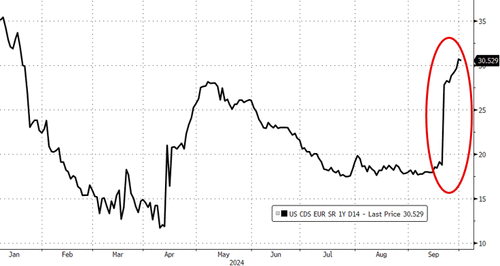
Slowly, then suddenly, said Hemingway about how men go bankrupt. The same could apply to the dollar.








